The domestication history of black pigs in China can be traced back to nearly 5,000 years ago. As early as the Jiuchongtian Huanlongyan site in the Shungeng area in the southern mountainous area of Jinan, and the present-day Jiyang Tuhe River Basin, large-scale animal husbandry activities had already appeared. These places are also regarded as one of the important birthplaces of ancient Chinese animal husbandry civilization.

Deer Pig
As a representative of traditional Chinese pig breeds, black pigs have the advantages of long growth cycle, moderate weight, and tender meat. However, due to its slow growth rate and low annual output - a black pig raised for one year usually weighs only about 150 kilograms - after the rapid expansion of white pig breeds introduced from the West at the end of the last century, the black pig population was almost facing the fate of extinction. Fortunately, some places, such as the Tuhe black pig in Jiyang, have been given special protection and have now become a rare high-quality native population.
Black pork not only tastes delicious and has firm muscle fibers, but also has high nutritional value, and is deeply loved by consumers. Its notable characteristics also include strong resistance to adversity, good adaptability, and strong disease resistance, and it also has broad prospects in ecological breeding and organic agriculture.
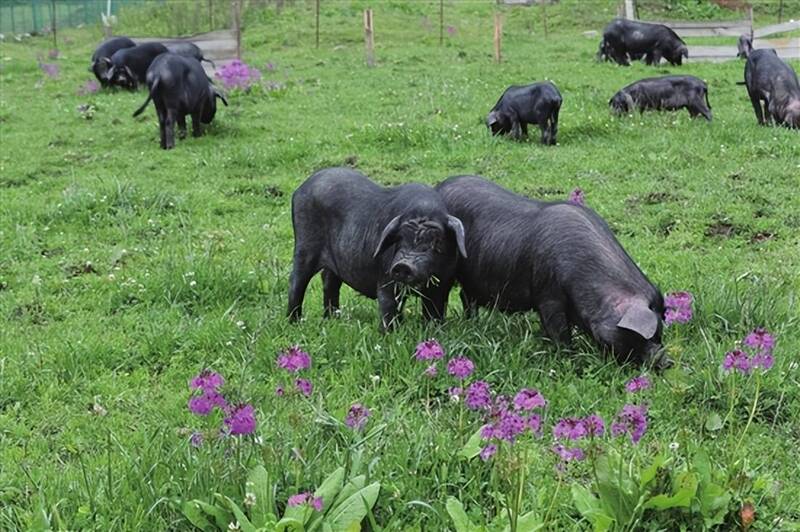
(grazing pig breed/Xuanwei ham raw materials/Ke Le pig/Dahe pig/Zhaotong pig/Liangshan pig)
Wujin pig is a rare black pig, which originated from the Wumeng Mountain area and the Jinsha River at the junction of Yunnan, Guizhou and Sichuan. As an excellent local pig breed for both fat and meat in the southwest region, Wujin pig covers many local types such as Ke Le pig, Dahe pig, Zhaotong pig, Liangshan pig, and has high local representativeness and germplasm value.
This kind of black pig is mostly raised in a free-range manner, and its living habits are similar to those of wild boars, so the meat is natural and pure, and the flavor is unique. Wujin pig is not only tender and fragrant, suitable for daily fresh cooking, but also a high-quality raw material for traditional pickled foods such as Yunnan ham, and enjoys a high reputation in both domestic and foreign markets.

(tender meat and fragrant taste/crispy and tender texture/Huaibei pig/mountain boar/stove pig/Dingyuan pig/ #A3A3A3;">Northern Anhui Pig/Huainan Pig)
Huai pig is one of the important representatives of black pigs in the Huanghuaihai region of China. It is a local excellent pig breed with a long history. It originated from the Huaibei Plain and is widely distributed in the middle and lower reaches of the Yellow River, Huaihe River and Haihe River basins. Its breeds include Huaibei pigs, mountain boars, stove pigs, Dingyuan pigs, Northern Anhui pigs, Huainan pigs and other local groups. It has good meat and fat properties and is an important part of my country's local black pig resources.
So, what is the quality of Huai pig meat? The real Huai pork is deeply loved by diners because of its obvious marble pattern in the muscle, fine and firm muscle fibers, tender meat, evenly distributed fat, melt-in-the-mouth, rich fragrance without being greasy, crispy taste without being dry.
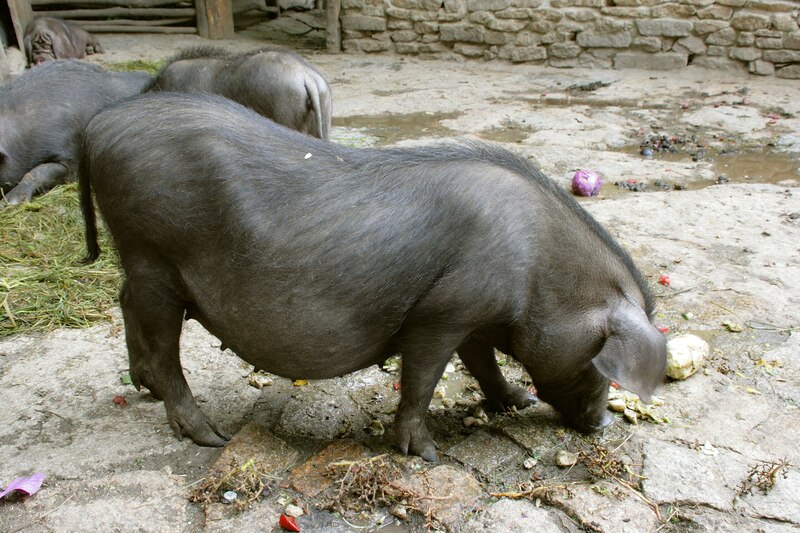
(famous for the large number of piglets/Erhualian pig/Meishan pig/Fengjing pig/Jiaxing black pig/Hengjing pig/Rice pig/Shawutou pig)
Taihu pig is a general term for local pig breeds unique to the Taihu Lake Basin in Jiangsu and Zhejiang, and is one of my country's traditional fine local breeds. It is understood that Taihu pigs can be subdivided into Erhualian pigs, Meishan pigs, Fengjing pigs, Jiaxing black pigs, Hengjing pigs, rice pigs, Shawutou pigs and other local breeds according to different origins and strains, forming a relatively complete breed group system.
So why is Taihu pig so famous? Its most prominent advantage is its super strong reproductive ability. It is one of the most representative breeds of high reproductive capacity in my country and even in the world. It has a large number of single-birth piglets, strong sow nursing ability, and high piglet survival rate. Therefore, it is widely used in breeding and genetic improvement research of breeding pigs.
In addition to its excellent reproductive performance, Taihu pigs also have excellent meat quality. The meat is ruddy, rich in intramuscular fat, and has a delicate and tender taste. It is one of the important representatives of quality pork and is deeply favored by the market and consumers.
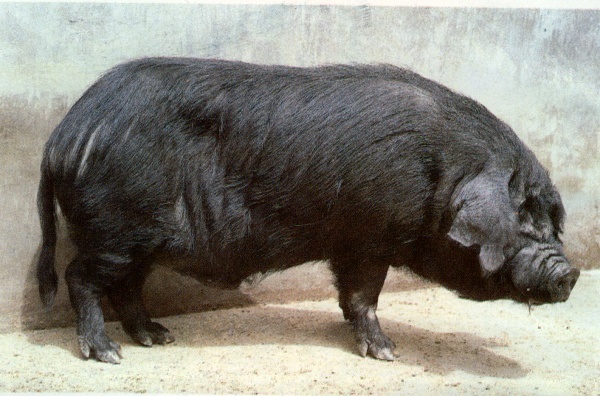
(Suitable for making ham/bacon/Enshi Black Pig/Penzhou Mountain Pig/Hechuan Black Pig/Luopan Mountain Pig/Quxi Pig/Yacha Pig)
Huchuan Mountain Pig is a type of local black pig breed distributed in the mountainous areas at the junction of Hubei, Hunan and Sichuan provinces, mainly distributed in mountainous areas such as Daba Mountain, Wushan Mountain, Wudang Mountain, Jingshan Mountain and Dalou Mountain. This breed group covers many local high-quality black pig types, such as Enshi Black Pig, Penzhou Mountain Pig, Hechuan Black Pig, Luopan Mountain Pig, Quxi Pig and Yacha Pig, all of which have typical mountain breeding characteristics.
So is Huchuan Mountain Pig delicious? According to relevant information in the field of food, the skin of Huchuan mountain pigs is thin, the fat is evenly distributed, the deposition ability is strong, and the meat is tender and fragrant, which is very suitable for making traditional processed products such as bacon, ham, and smoked meat, and is deeply loved by consumers, especially residents in the southern region

(tender meat/fragrant taste/with a domestication history of more than 6,000 years)
The Eight-Eyebrow Pig is a local excellent pig breed in Huzhu Tu Autonomous County, Qinghai Province. It is named "Eight-Eyebrow" because of its narrow head, large and drooping ears, and "eight"-shaped vertical wrinkles on its forehead. This pig is a local breed that has gradually formed through long-term natural selection and artificial cultivation under the unique natural ecological conditions of the Qinghai-Tibet Plateau.
According to relevant historical records, the domestication history of the Eight-Eyebrow Pig can be traced back to more than 6,000 years ago. It can be regarded as one of the oldest primitive livestock breeds in my country and has important animal husbandry culture and germplasm resource value.
So is the Eight-Eyebrow Pig delicious? The answer is yes. The meat of the Eight-Eyebrow Pig is bright red, with evenly marbled fat in the muscles. The meat is tender, the flavor is unique, and it is fragrant but not greasy. It is highly praised by local people and food lovers, and is often used to make high-quality pork products and special dishes.

(High amino acid content/firm meat/Large litter/cold resistance/rough feeding resistance)
Min Pig, also known as Northeast Min Pig, is a local native pig breed with a long history in Northeast China. It can be divided into three types according to its size: large Min Pig, medium Min Pig (two Min Pig) and small Min Pig (commonly known as purse pig).
So why is Min Pig so highly regarded in the market? First of all, its meat is firm, and the fat distribution in the muscle presents a beautiful marble texture. It has a fresh and fragrant taste and rich layers. It is considered "high-quality meat" by many consumers. In addition, scientific research shows that the types and contents of amino acids contained in Min pig meat are significantly higher than those of most foreign pig breeds, which also gives it higher nutritional value.
More importantly, Min pigs have high fertility, strong cold resistance and adaptability to rough feed, which makes them very suitable for grazing in cold areas in northern my country. These excellent characteristics make Min pigs not only popular among local farmers, but also gradually attract widespread attention and research in the field of animal husbandry breeding at home and abroad.
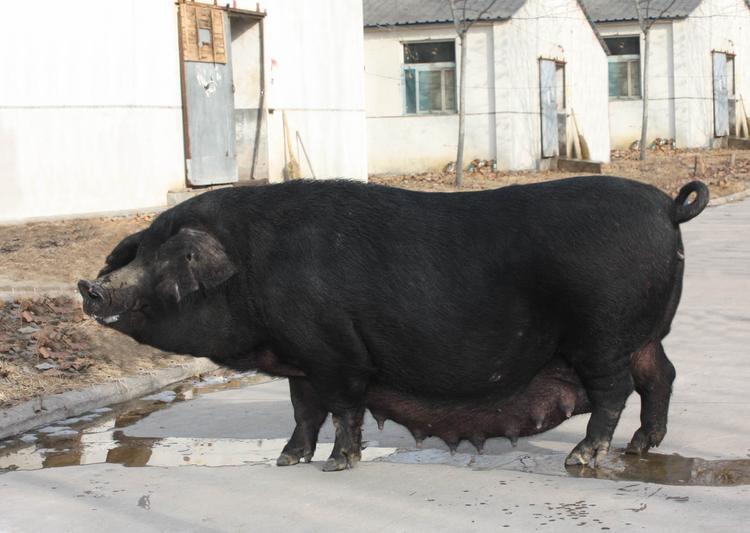
(One of the high-end marbled pork/Delicious and tender/Looks like a wild boar)
Laiwu pig is one of the representative breeds of North China local pigs in Shandong, known for its pure breed and complete lineage. Its appearance is quite similar to that of a wild boar, full of primitive style. Why is Laiwu pig famous? Laiwu pig can produce high-end marbled pork and has the reputation of "aristocrat among pigs".
The most notable feature of this breed of pig is the quality of its pork - the meat is elastic, the fibers are fine and tough, and the chewiness is strong. Laiwu pigs not only have a balanced distribution of muscle and fat, but also have thick skin, fragrant and non-greasy fat, and a delicious overall taste with a natural meaty aroma that leaves a lasting aftertaste.

(Famous for making braised pork/Fine meat/delicious and tender)
Southern Anhui Black Pig is named after its origin - the southern mountainous area of Anhui Province. It is one of the traditional excellent fat meat local pig breeds in my country, mainly including the two local groups of "Yangshan Black Pig" and "Jixi Black Pig". Due to the long growth cycle of Southern Anhui Black Pig and the traditional ecological breeding method, its meat has accumulated a richer flavor. The meat is tender and firm, fat but not greasy, lean but not dry, with a delicate and smooth taste and rich aroma.
Many people commented that once you have eaten it, it is difficult to accept the taste of ordinary pork. In particular, the braised pork made with southern Anhui black pigs is even more flavorful - the fat part is crystal clear and melts in the mouth, the lean meat is tender and chewy, and the meat pieces covered with sauce are attractive in color and fragrant, which makes people have endless aftertaste.

(preferably grilled/thin skin and fine bones/tender meat/sweet and glutinous taste)
Southern Yunnan Small-eared Pig is a traditional local fine breed in southern Yunnan, mainly distributed in Mengla, Ruili, Yingjiang and other places, covering multiple local groups, such as Dehong Small-eared Pig (also known as Jingpo Pig), Lisu Pig, Mengla Pig (or Aini Pig) and Wenshan Pig (also known as Ani Pig). This type of pig is short and compact, with ears erect or stretched to the sides, plump and round body, thin skin and sparse hair, mostly pure black hair.
Southern Yunnan Small-eared Pig has delicate meat, rosy and tender lean meat, white and thick fat meat, soft and fragrant taste, with a strong "original" pork flavor. The muscle fibers of its lean meat are tight and slender, and the mellow flavor of traditional native pigs can be clearly felt when chewing. Especially when using Southern Yunnan Small-eared Pig to make roasted pig, it is full of flavor. The roasted pig skin is crispy and golden, with fat and lean parts. It is oily but not greasy, and has a fragrant aroma. It is one of the indispensable delicacies in the traditional festivals of Yunnan ethnic minorities.
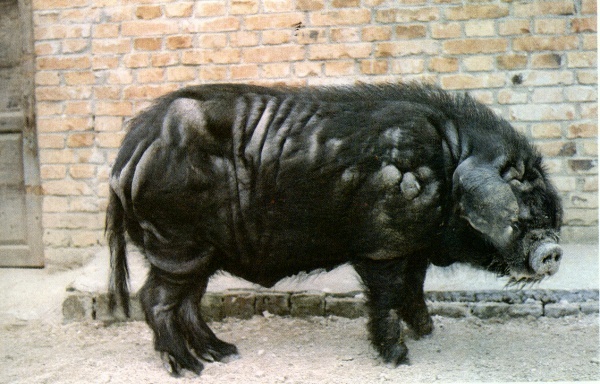
(tender and juicy meat/unique flavor/Big-eared Black Pig/Small-eared Black Pig)
Hanjiang Black Pig is an excellent local black pig breed bred in the Heihe River Basin in the west of Hanzhong, Shaanxi, including several traditional branches, such as Heihe Pig, Tiehe Pig, Tielu Pig, Shuiluhe Pig, Ankang Pig, etc. In 1983, these local breeds were uniformly classified and named "Hanjiang Black Pig". According to physical characteristics, it is currently divided into two main types: Big Ear Black Pig and Small Ear Black Pig, each with its own characteristics.
Hanjiang Black Pig's pork is famous for its delicate texture, full elasticity, rich gravy and mellow taste. Its meat color is ruddy and natural, the fat is evenly distributed, and it is fragrant and not greasy. Especially in traditional cooking methods such as stewing, boiling, and roasting, it can better release the original fragrance of black pork, which makes people have endless aftertaste.
The ranking of China's top ten black pigs is mainly based on the popularity, origin, taste, characteristics, popularity, and honors of domestic black pig varieties. It is recommended to make a comprehensive ranking based on the "China National Geographical Indication Products", "Agricultural Product Geographical Indications", and "National Livestock and Poultry Genetic Resources Variety List" evaluated by authoritative institutions such as the Ministry of Agriculture and the General Administration of Quality Supervision, Inspection and Quarantine. The data is as of May 2025. For reference only. If you have any questions, please comment/criticize at the end.
animal tags:
We created this article in conjunction with AI technology, then made sure it was fact-checked and edited by a Animals Top editor.